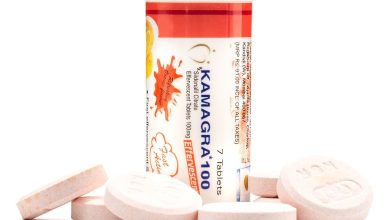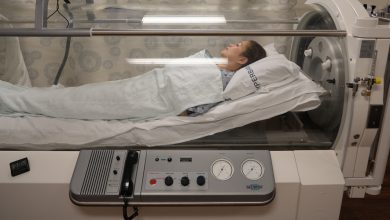Hiko Nose Thread Lift vs. Traditional Rhinoplasty: Which is Right for You?

When considering nasal enhancement, individuals often face the choice between a non-surgical solution like the Hiko nose thread lift and a more invasive option like traditional rhinoplasty. Both procedures offer distinct benefits and cater to different aesthetic goals. Understanding the differences between these two approaches can help you make an informed decision about which option is right for you. This article provides a comprehensive comparison of the hiko nose thread lift and traditional rhinoplasty, including their benefits, limitations, and considerations.
What is a Hiko Nose Thread Lift?
The Hiko nose thread lift is a non-surgical cosmetic procedure designed to enhance the shape and contour of the nose using absorbable threads. This minimally invasive treatment aims to lift and support the nasal bridge and tip, providing subtle yet effective improvements in nose shape and facial symmetry.
Key Features:
- Minimally Invasive: The procedure involves the insertion of fine threads into the nasal tissues using a needle or cannula, requiring no surgical incisions.
- Local Anesthesia: Local anesthesia is used to numb the area, minimizing discomfort during the procedure.
- Immediate Results: Many patients notice an immediate improvement in the shape of their nose, with final results becoming apparent over several weeks as collagen production increases.
What is Traditional Rhinoplasty?
Traditional rhinoplasty, commonly known as a nose job, is a surgical procedure aimed at altering the structure of the nose to achieve desired aesthetic and functional outcomes. This invasive procedure involves making incisions, either inside the nostrils or across the base of the nose, to reshape the nasal framework.
Key Features:
- Surgical Approach: Rhinoplasty involves making incisions to access and reshape the underlying nasal structures, such as the bone and cartilage.
- General Anesthesia: The procedure is performed under general anesthesia, ensuring the patient is asleep and completely unaware during the surgery.
- Long-Term Results: Rhinoplasty offers more permanent results compared to non-surgical options, with a focus on achieving significant structural changes to the nose.
Comparing Hiko Nose Thread Lift and Traditional Rhinoplasty
Procedure Complexity
- Hiko Nose Thread Lift: The procedure is minimally invasive and typically completed within 30 to 60 minutes. It involves inserting threads to lift and contour the nose, without the need for incisions. The complexity is relatively low, and the procedure is performed on an outpatient basis.
- Traditional Rhinoplasty: Rhinoplasty is a more complex surgical procedure that can take several hours to complete. It involves making incisions, reshaping nasal structures, and requires a hospital stay or outpatient surgery. The complexity is higher, and the recovery process is more involved.
Recovery Time
- Hiko Nose Thread Lift: Recovery time is relatively short, with most patients returning to their daily activities within a few days. Minor swelling, bruising, or redness may occur but typically resolves within a week. The recovery process is less disruptive and requires minimal downtime.
- Traditional Rhinoplasty: Recovery from rhinoplasty is more extensive, often requiring one to two weeks of downtime. Patients may experience significant swelling, bruising, and discomfort, with a longer period of restricted activity. Full recovery can take several months, with the final results becoming evident over time.
Results and Longevity
- Hiko Nose Thread Lift: The results are immediate but may require several weeks for the full effects to become apparent as collagen production increases. The results generally last between 12 to 18 months before additional treatments may be needed. The outcome is more subtle compared to surgical options.
- Traditional Rhinoplasty: Rhinoplasty provides long-lasting results, with the changes being permanent. The procedure can significantly alter the nose’s shape and structure, offering more dramatic and permanent improvements. The final results are usually visible after several months of healing.
Risks and Complications
- Hiko Nose Thread Lift: The risks are relatively low due to the minimally invasive nature of the procedure. Common side effects include temporary swelling, bruising, and redness. Rare complications may include thread migration or infection, but these risks are minimized by choosing a qualified practitioner.
- Traditional Rhinoplasty: Rhinoplasty carries a higher risk of complications due to its invasive nature. Potential risks include infection, excessive bleeding, scarring, changes in nasal sensation, and breathing difficulties. The surgical risks are inherent to any major operation and require careful consideration.
Cost
- Hiko Nose Thread Lift: The cost of the Hiko nose thread lift is generally lower than traditional rhinoplasty. The price can vary based on factors such as the clinic’s location, the practitioner’s expertise, and the number of threads used. However, the procedure is more affordable compared to the comprehensive costs associated with surgical rhinoplasty.
- Traditional Rhinoplasty: Rhinoplasty is more expensive due to the complexity of the surgery, anesthesia, and the need for post-operative care. The cost includes the surgeon’s fees, facility fees, and any additional expenses related to the procedure. Insurance coverage for rhinoplasty may vary based on whether the surgery is cosmetic or functional.
Suitability for Different Goals
- Hiko Nose Thread Lift: The procedure is suitable for individuals seeking subtle enhancements to their nasal contour without significant structural changes. It is ideal for those looking for a non-surgical option to address minor concerns such as a flat nasal bridge or a drooping tip.
- Traditional Rhinoplasty: Rhinoplasty is better suited for individuals seeking more dramatic and permanent changes to their nasal structure. It is appropriate for those with significant structural concerns, functional issues, or those looking to achieve a major transformation in the appearance of their nose.
Maintenance and Follow-Up
- Hiko Nose Thread Lift: Follow-up appointments are typically scheduled within a few weeks to assess the results and address any concerns. Maintenance treatments may be needed to sustain the results over time. The procedure’s non-surgical nature allows for flexible scheduling and minimal impact on daily life.
- Traditional Rhinoplasty: Post-operative follow-up is crucial to monitor the healing process and ensure proper recovery. Maintenance is generally not required, but patients must adhere to post-surgical care instructions to achieve the best results. The recovery period involves regular check-ups to track progress and manage any complications.
Choosing the Right Option for You
Deciding between a Hiko nose thread lift and traditional rhinoplasty depends on various factors, including your aesthetic goals, tolerance for downtime, budget, and desired outcomes. Here are some considerations to help you make the right choice:
Consultation with a Qualified Practitioner
- Expert Advice: Schedule consultations with qualified practitioners for both procedures to discuss your goals, expectations, and the most suitable treatment options.
- Personalized Plan: Receive a personalized treatment plan based on your unique needs and preferences, taking into account factors such as facial anatomy, desired results, and overall health.
Evaluating Your Goals
- Subtle Enhancements: If you seek subtle improvements with minimal downtime, the Hiko nose thread lift may be a suitable option.
- Significant Changes: If you desire more significant and permanent changes to your nose’s shape and structure, traditional rhinoplasty may be the better choice.
Understanding the Recovery Process
- Minimally Invasive: The hiko nose thread lift offers a quicker recovery with less disruption to your daily life.
- Surgical Recovery: Traditional rhinoplasty requires a more extended recovery period with potential discomfort and activity restrictions.
Conclusion
Both the Hiko nose thread lift and traditional rhinoplasty offer unique benefits and cater to different aesthetic needs. By understanding the differences between these two approaches, you can make an informed decision about which procedure aligns with your goals and preferences. Consulting with experienced practitioners, evaluating your desired outcomes, and considering factors such as recovery time and cost will help you choose the right option for achieving your ideal nasal contour. Whether opting for a non-surgical enhancement or a surgical transformation, understanding your choices ensures a satisfying and successful outcome.



